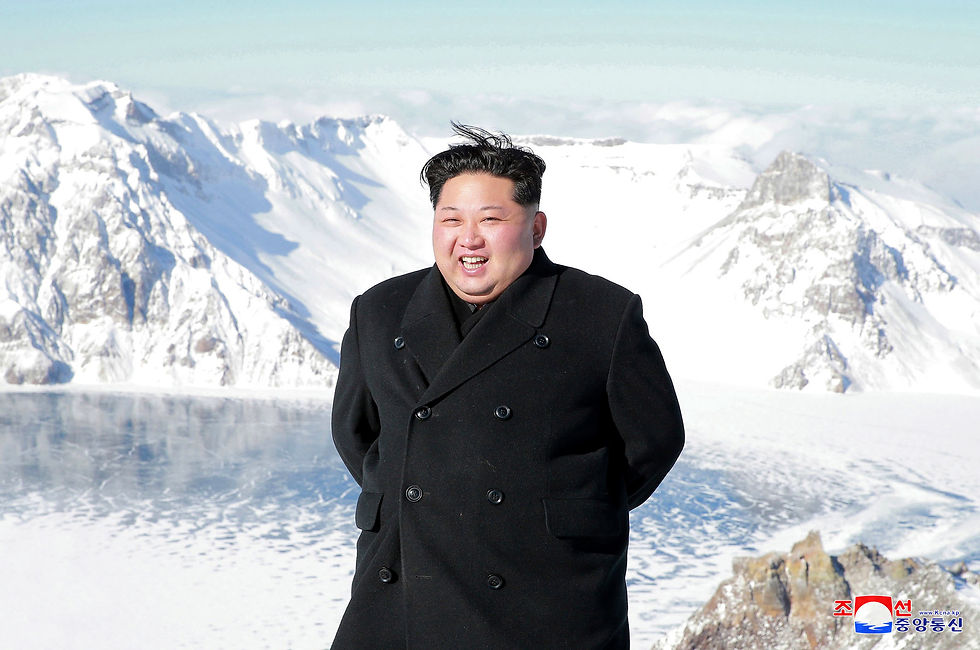The Method in the Madness: Understanding North Korea’s Nuclear Ambition
- Michael Declan Broad
- Dec 13, 2017
- 3 min read

The success of North Korea’s recent missile launch, has raised alarms around the world.
Pyongyang claims it is now capable of successfully hitting anywhere in mainland America, bringing the US into the sphere of North Korea’s military reach for the first time. This missile test is just the latest addition to the increasing tensions on the Korean Peninsula. But what is the aim of North Korea’s nuclear program?
North Korea’s nuclear program has been met with widespread international criticism, even from, surprisingly, North Korea’s only ally, China. Yet, the criticism is only met by further determination from Pyongyang to achieve its nuclear targets.
In August, US President Donald Trump said North Korea’s attitude towards America would be met with “fire and fury”.
The United Nations has acted to attempt to defuse the situation on the Korean Peninsula. Under-Secretary-General for Political Affairs Jeffrey Feltman, visited North Korea following the missile tests, and met with Foreign Minister Ri Yong Ho. In a joint statement, they said: “the current situation is the most tense and dangerous peace and security issue in the world today.”
North Korea is playing a high-stake game against growing opposition. The question is, why Pyongyang is so committed to its weapons programs in the face of rising opposition? It may seem that North Korea is on a path of war, or that the nuclear program is aimed at destruction. However, it is important to understand what North Korea is trying to achieve with its weapons programs. Overall, Pyongyang has one main aim, survival.
It should not be forgotten that North and South Korea have been locked in a 65-year stalemate following the ceasefire of the Korean war in 1953. North Korea proudly boasts its military might as a sign of the regimes power, and clings to it as the protector of the regime.
North Korea currently has the fourth largest standing army, with approximately 1.1 million personnel. However, experts say that North Korea’s military equipment, and technology is outdated, reducing the effectiveness of North Korea’s conventional military. However, both Pyongyang and Seoul realise the mutual destructive reality conflict would bring.
The goal of the Kim dynasty is to solidify their regime. The hostility towards the international community comes from a lack of trust, based on historic events. North Korea believes that both the Giddafi regime in Libya and the Saddam regime in Iraq collapsed because of their abandonment of their nuclear programs.
Libya sticks an alarming comparison to North Korea for Pyongyang, as Libya exchanged its nuclear program to ease sanctions and improve relations with the West, only to find the West not only supported but provided arm for Libyan rebels, who ultimately overthrew the government. North Korea does not trust the West to honour any agreement of improved relations, and therefore only has its nuclear program to counter the deceitful enemy it perceives the West to be.
The United Nations has called to keep channels open with North Korea to ease the tensions on the Peninsula. North Korean state news announced that Korean officials and the UN have agreed to "communication through visits at different level on a regular basis in the future".
Although communication is progress, it is unlikely that North Korea will be swayed away from its nuclear program.
North Korea’s nuclear program ambition comes from the regimes determination for survival. The nuclear program is the only bargaining chip Pyongyang can believe in, there is simply no trust in western promises, security or economic support.
The North Korean government will continue to develop its weapon technologies, undeterred by any condemnation. Whether this development will lead to conflict remains to be seen, but we can be sure the consequences will be historic.





Comments